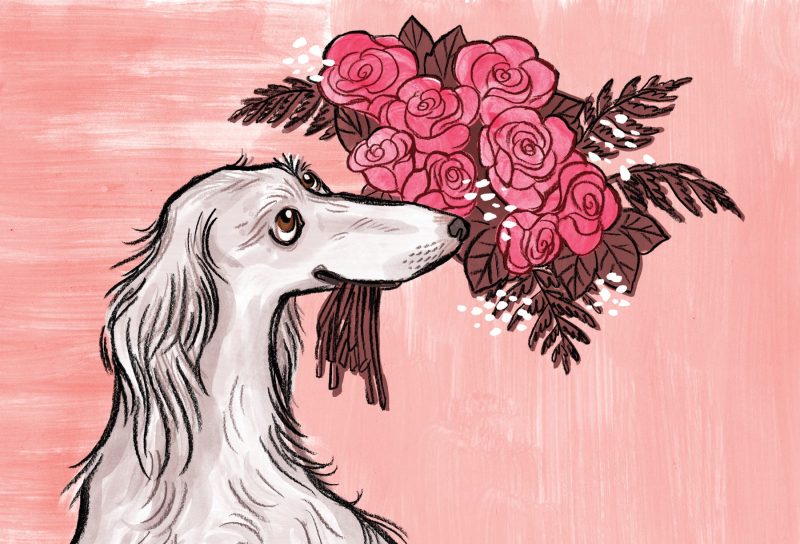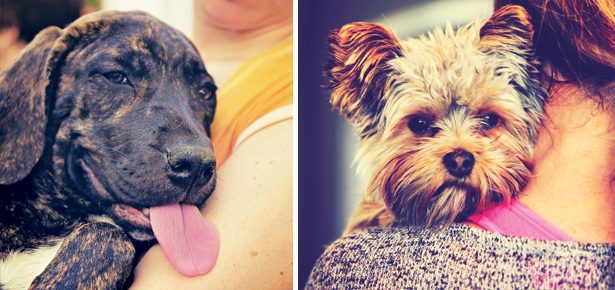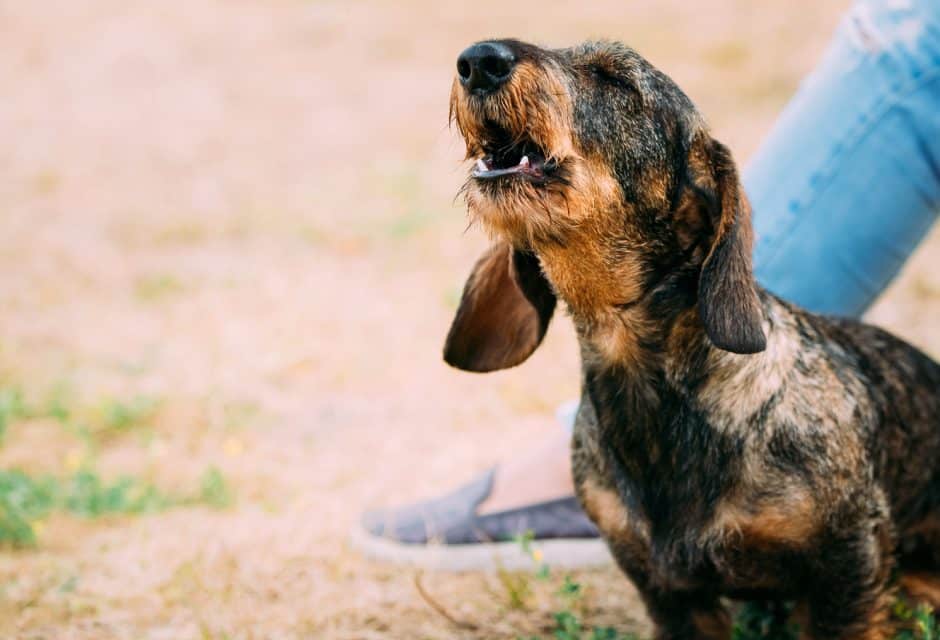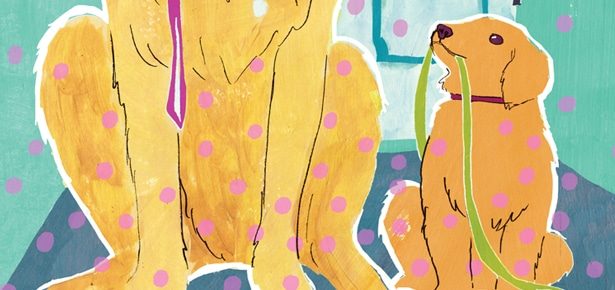
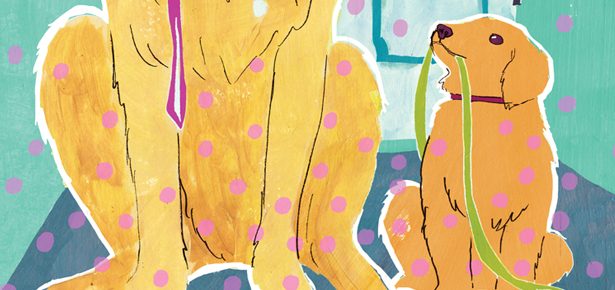
How Dogs Learn From Other Dogs
Let your adult dog teach your puppy! Dogs can teach other dogs obedience commands
Bringing a new puppy into my home always makes me a more attentive observer of dog behaviour. My recently arrived dog is a Nova Scotia Duck Tolling Retriever that I call Ranger. When he arrived at my house he was less than three months old and was still at the stage where he considered the ears of my adult Cavalier King Charles Spaniel, Ripley, to be chew toys. Although he was a typical playful retriever puppy, one of the more serious tasks that he seemed to have set for himself was observing the behaviours of my adult dog. He watched Ripley very carefully, always looking in the direction Ripley looked, as if to see whether there was something important to observe. Similarly, he would follow Ripley’s movements around the house. It looked to me as though my puppy had decided that the adult dog probably knew some useful things and that by copying his behaviours he might derive some benefits for himself!
 As a psychologist, it still surprises me that one aspect of dog learning that is overlooked by the scientific community has to do with dogs modeling their activities on the behaviours they observe in other dogs. This type of learning involves what scientists call allelomimetic behaviours, or group-coordinated behaviours that depend upon dogs’ inborn inclination to want to be with other dogs, to follow their lead, and do the same things. As a simple example, how do you think that wild canines, like wolves, learn to hunt? It is clear that they watch the adult members of the wolf pack engaging in those activities and then copy those behaviours, applying them when they grow large enough to be able to do the work themselves.
As a psychologist, it still surprises me that one aspect of dog learning that is overlooked by the scientific community has to do with dogs modeling their activities on the behaviours they observe in other dogs. This type of learning involves what scientists call allelomimetic behaviours, or group-coordinated behaviours that depend upon dogs’ inborn inclination to want to be with other dogs, to follow their lead, and do the same things. As a simple example, how do you think that wild canines, like wolves, learn to hunt? It is clear that they watch the adult members of the wolf pack engaging in those activities and then copy those behaviours, applying them when they grow large enough to be able to do the work themselves.
In a similar manner, our domesticated puppies show tendencies to imitate the behaviours of other dogs from an early age. This continues throughout their lives. It appears that many socially significant behaviours are learned as a result of participating in such organized social behaviours. This is one of the benefits of bringing a puppy into a home where there is an adult dog who knows the routines and the regulations. It makes housebreaking considerably easier, for one, as the puppy follows along and learns where and when to eliminate.
There are many examples of complex tasks that dogs can learn by observation. Perhaps one of the more dramatic involved the work of Saint Bernard rescue dogs. The breed was named for the hospice founded by Saint Bernard and located in the Swiss Alps on one of the principal roads that connect Switzerland to Italy. For many years the hospice provided winter travellers with a refuge from wind, cold, blizzards, and avalanches. The dogs assisted the monks in their searches for travellers who had strayed off of the main road. The monks seldom left the hospice without dogs, because the mountain fogs can come on suddenly and with no warning, making it impossible to see even a few feet ahead. Without the dogs the monks might have never found their way back to the hospice.

Illustration by Melanie Luther
Together, the monks and dogs saved thousands of travellers. The dogs worked in teams of three; when a lost traveller was found, two of the dogs would lie down beside him to keep him warm and lick his face to try to keep him conscious. Meanwhile, the third returned to sound the alarm and bring back help. These dogs were never given any special training, and, in any event, no one is exactly sure how one would go about training a dog to do this task. Young dogs were simply allowed to run with the older experienced dogs when they went on patrol. In this way the new dogs learned what was expected of them. Ultimately, each dog not only learned his job but also decided for himself whether his professional specialty would eventually be to lie with the victim or go for help.
I have always thought that the tendency dogs have to model their behaviours on what they see other dogs doing might be used to help teach common obedience commands. Thus, I developed a routine to assist in my puppy’s training that takes advantage of the fact that my adult dog already responds to commands that I want the puppy to learn. With the two dogs together, I give the obedience command to the adult dog, and then attempt to lure the puppy into position (for example a “sit” or “down”) using a bit of bait. This modeling approach definitely decreased the amount of time it took the puppy to catch the gist of what I wanted; after only a few repetitions, when it was the puppy’s turn to perform he would independently respond correctly. Later, when I had the puppy alone and gave him the obedience command, I found that he understood the command a greater percentage of the time than I would normally anticipate. This seemed to confirm my notion that it might be useful to deliberately use a dog as a demonstrator in order to help teach other dogs specific obedience commands. Of course, I reasoned that if this were the case then some canine behavioural researcher would have attempted to demonstrate that experimentally, but when I searched the scientific literature to see if dog demonstrators could be useful in teaching obedience commands to other dogs, I found very little that directly dealt with this question in the published research archives. I was therefore very pleased when a recent report from an investigative team headed by Anna Scandurra in the Department of Biology at the University of Naples landed on my desk. The article had just been accepted for publication by the journal Applied Animal Behaviour Science.
The subjects of this study were 50 Labrador Retrievers, all of whom lived at home with their owners. One interesting aspect of this investigation is that none of these dog owners were professional trainers, so the question that the researchers were trying to address was whether an untrained dog can learn a new obedience command after seeing it demonstrated, even though it was being handled by a relatively untrained person and not a dog trainer.
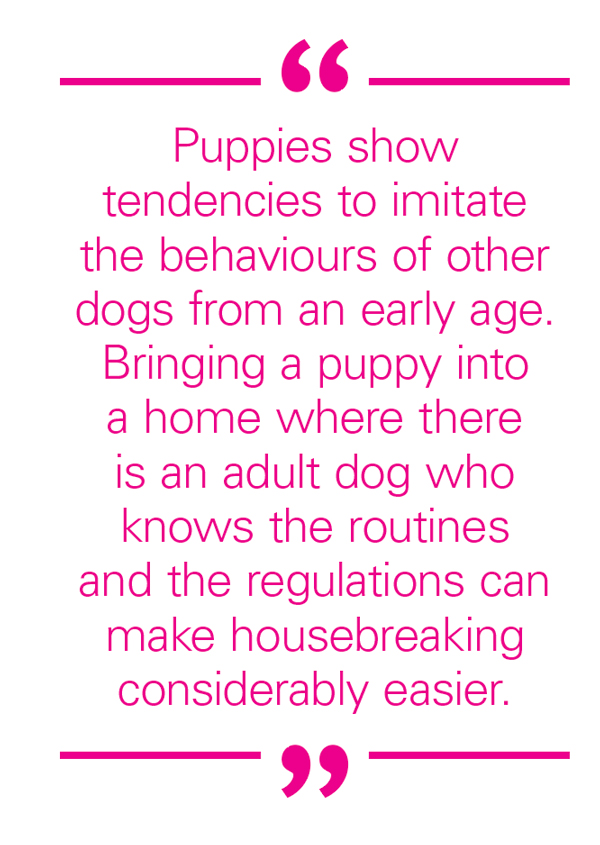
In the training stage of the study, the desired behaviour was demonstrated by another Labrador Retriever who had already learned the “trunk” and “slide” commands. The dogs who observed the demonstrator dog were then given another chance to try to perform the task. Their performance was compared with a control group who were also asked to perform the task without having observed another dog demonstrating the correct action. Remember that the dog owners were not practiced, professional trainers and were simply trying to lure or induce their dogs to perform the behaviour in any way that they thought might work.
The results were interesting and unambiguous. Of the dogs who observed a demonstrator dog, 62.5 percent performed the task correctly in the test phase, as compared to the 23.5 percent succesful performance rate seen among the dogs who did not get to see the demonstration. There was one interesting nuance in the results, namely that the dogs who were a little bit older seemed to benefit from the demonstration somewhat more. Presumably a lifetime of watching other dogs behave had already taught them that sometimes it is useful to model the behaviour of other canines.
The experimenters summarized their data by saying, “In conclusion, our results suggest that observational learning could be useful in dog training.” They point out that it may be particularly valuable when the dog’s training is being done by a relatively naïve handler rather than a professional dog trainer.
For me, this validates my casually developed technique of giving obedience commands first to my adult dog who serves as a demonstrator, and then following it by attempting to lure the puppy to do the same thing. The downside of puppies watching and learning is that they can also learn undesirable behaviours from the other dogs in the household. For example, Ripley has already taught Ranger how to open the clothes hamper and pull out dirty socks to use as play toys…
Join the newsletter and never miss out on dog content again!
"*" indicates required fields
By clicking the arrow, you agree to our web Terms of Use and Privacy & Cookie Policy. Easy unsubscribe links are provided in every email.

